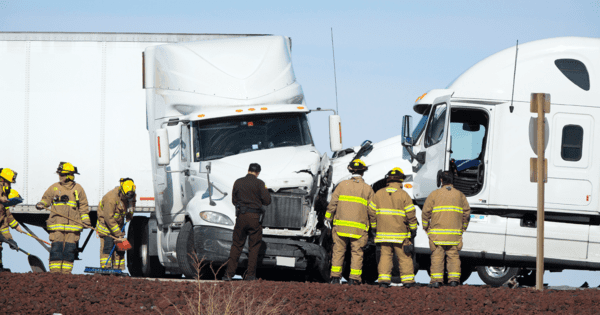Of course, winter varies depending on location. Our US customers will generally experience more snow and ice than those based in the UK and Ireland. In fact, over 70% of the USA’s roads are located in snowy regions, which receive more than five inches (or 13 cm) average snowfall annually. (Federal Highway Administration, 2019)
What do the statistics tell us about winter driving?
We all instinctively feel the roads are more dangerous in winter – and the data shows that to be true. It’s a well-acknowledged fact that stopping distances are up to ten times longer in snow and ice, compared to on a dry road.
In the USA and elsewhere, there are actually more accidents in the summer, but it seems winter crashes are more likely to be severe.
Research shows there are about 156,000 crashes annually in the USA due to icy roads and more than 116,000 people are injured and more than 1,300 people are killed in crashes on snowy or icy roads each year.
In the UK, November is the top month for the greatest number of accidents, although followed by May, June, and July – presumably because more day trips and holiday journeys take place. October comes in fifth. In Ireland in 2019, September and December were particularly dangerous in terms of road deaths.
In 2017 in the UK there were over 7,000 road accidents reported where the cause was given as slippery road surface.
But how do motorists maximize safety in winter driving conditions?
Don’t skimp on maintenance
We have discussed previously the importance of daily vehicle checks for HGVs and commercial vehicles. Regular checks are crucial to safety and important for compliance, although our recent survey found they were often overlooked. Checking your vehicle isn’t just the responsibility of those who drive for a living, though. Every driver must prioritize vehicle maintenance to guard against issues.
Ensure brakes, fluids, and tyres are regularly checked and maintained. Wiper blades must be in good condition to aid visibility and cold temperatures can be harsh on your battery so ensure it is in good condition before the temperature really plummets. Check hoses, belts, and lights. Stock up on de-icer, windscreen wash, oil, and anti-freeze.
Be prepared!
Not just for Boy Scouts! An emergency kit in your vehicle is an excellent idea. Suggested inclusions are a blanket, ice scraper, small shovel, torch/flashlight, boots and warm clothes, jump leads, a hazard warning triangle, snacks and drinks. It’s always good practice to have a phone charger in your vehicle too. Hopefully, you won’t ever need these items but better safe than sorry.







